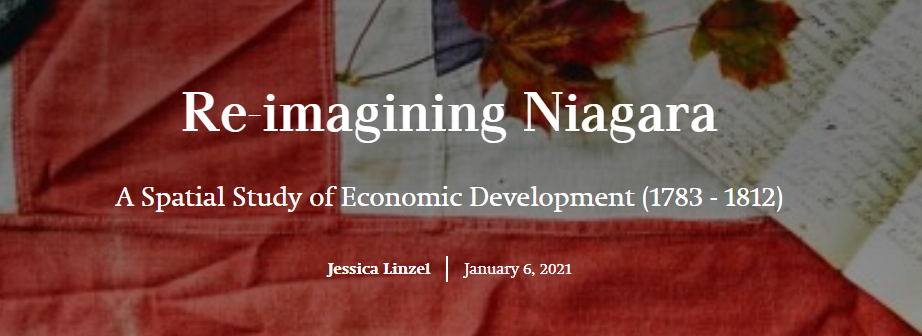This Story Map is based on spatial analysis, using ArcGIS software to better understand Niagara’s economic development from 1783 to 1812. Brock University Masters of Arts in History student Jessica Linzel used a combination of textual and digital sources to create a geospatial database of merchants, trade routes, and commodities from 1783-1812 to inform her research.
The main arguments in her study include:
- Living on or near the Niagara escarpment and its main waterways increased white farmers’ chances of being agriculturally and commercially successful.
- Free black labour and proximity to manufacturing and sale points in the flour supply chain were essential to surplus wheat production for white farmers during the first decade of settlement in Niagara.
- Small communities formed around centers of economic activity. At the same time, these industrial hubs did not function in complete isolation from other townships or external markets.
- Participation in Niagara’s economy was limited by factors of race, gender, and class; thus individuals maneuvered through their subjective socio-political position within society in their own unique way.
- Merchants during the 1780s relied on the fur trade and the Niagara portage to create deeper ties in the peninsula. Communicating with partners around the lower Great Lakes, they bettered their position locally so they could enter the 19th century with a more established set of capital gains.
Published by: Jessica Linzel, Masters of Arts in History student, Brock University
Publication Date: January 6, 2021
Click here to view: Re-imagining Niagara Story Map
Additional information about this research study project can be found at: Brock News article, June 09, 2021 and Mapping Early Niagara website








